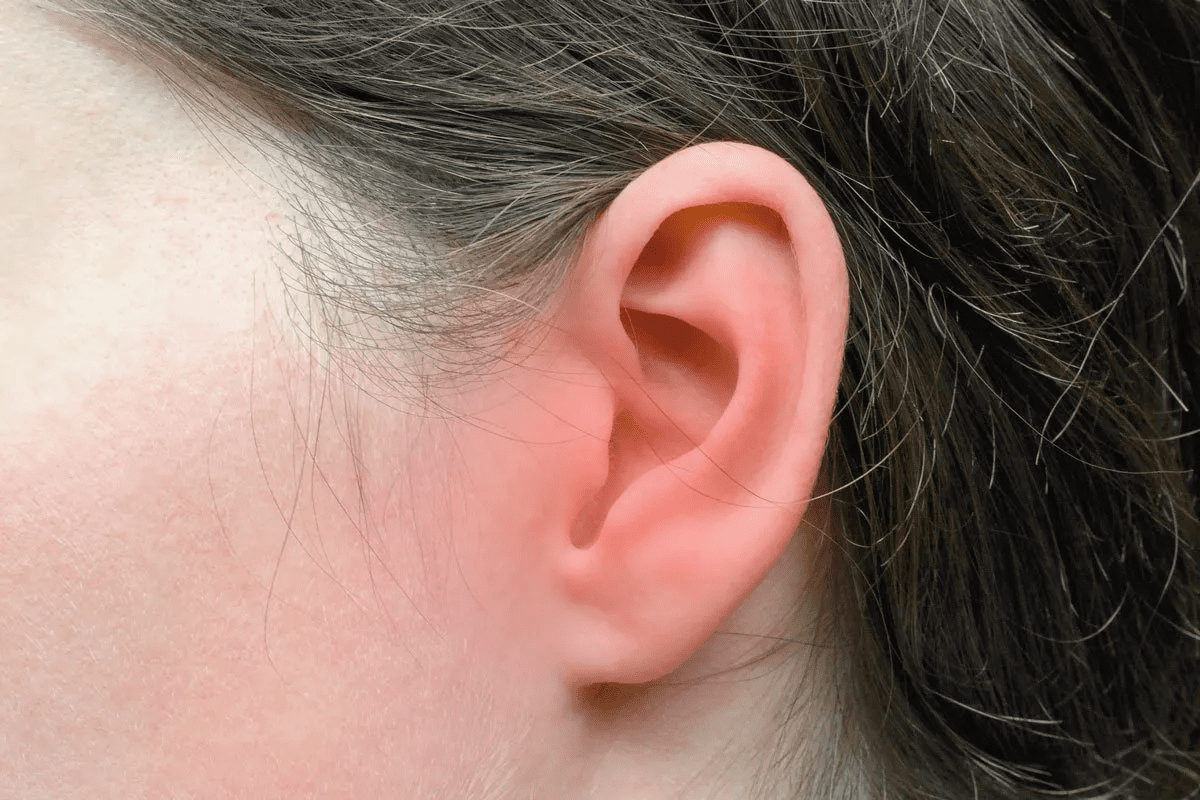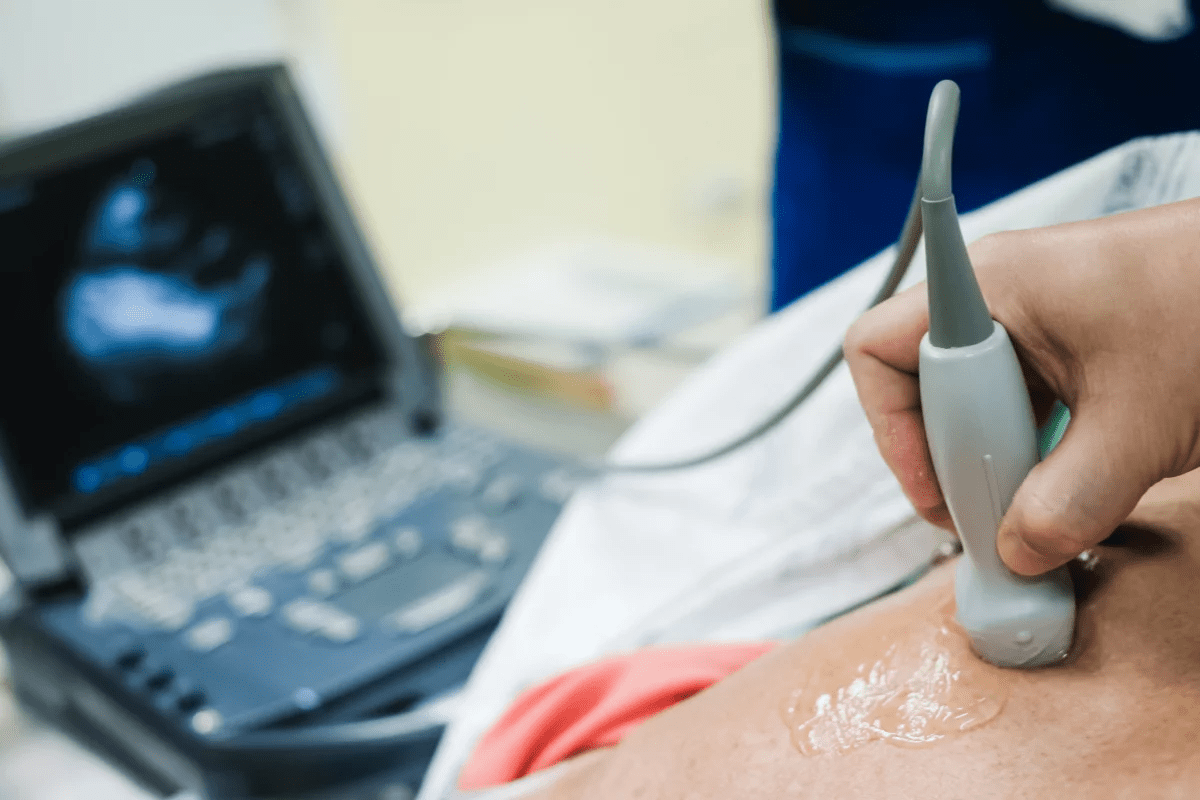Last Updated on November 26, 2025 by Bilal Hasdemir

Having a heart stent procedure is an important step in treating coronary artery disease. Understanding the recovery time stent helps patients plan their return to daily activities safely and confidently.
At Liv Hospital, we guide patients through every stage of recovery using the latest medical techniques and compassionate care. Typically, the recovery time stent ranges from a few days for minor activities to a few weeks for full return to normal routines. However, the exact timeline can vary depending on your overall health and the specifics of your procedure.
By knowing what to expect for recovery time stent, patients can manage their lifestyle, monitor their progress, and ensure a smoother healing process with the support of our expert medical team.
Key Takeaways
- Most people can return to normal activities within a couple of weeks after the procedure.
- Individual health factors can influence the recovery process.
- Understanding the recovery process is key to a smooth transition.
- Liv Hospital offers personalized care and guidance throughout the recovery journey.
- The latest medical protocols are used to ensure the best possible outcomes.
What Happens During a Heart Stent Procedure

The heart stent procedure is a complex treatment for atherosclerosis. This condition causes fats, cholesterol, and other substances to build up in artery walls. This buildup can block blood flow to the heart, leading to chest pain or heart attacks.
The Purpose of Coronary Stents
Coronary stents are small, mesh-like tubes used to keep arteries open. Their main goal is to:
- Improve blood flow to the heart muscle
- Reduce symptoms of coronary artery disease, such as chest pain
- Prevent heart attacks by stabilizing plaques and preventing further blockages
Stents help manage coronary artery disease. They improve patients’ quality of life and can lead to better long-term outcomes.
Types of Stent Procedures
There are mainly two types of stent procedures:
- Bare-metal stents: These metal mesh stents keep arteries open but have a higher risk of restenosis (re-narrowing of the artery).
- Drug-eluting stents: These stents are coated with medication to prevent artery re-narrowing. They are preferred because they have a lower risk of restenosis compared to bare-metal stents.
Preparing for Your Procedure
Before a heart stent procedure, patients undergo evaluations to check if they’re suitable. This includes:
- Medical history review and physical examination
- Blood tests to assess overall health and check for any bleeding disorders
- Imaging tests, such as angiography, are used to visualize the coronary arteries
It’s also important for patients to discuss their medications with their healthcare provider. Some medications may need to be adjusted or stopped before the procedure. Understanding the preparation steps helps patients feel more informed and ready for their treatment.
Fact 1: The Average Recovery Time Stent Patients Experience

Knowing how long it takes to recover after a stent is key to getting back to normal. The average recovery time can change a lot. It depends on your health, the procedure’s complexity, and how well you follow your doctor’s advice.
Immediate Post-Procedure Recovery
Right after the stent is put in, you’ll stay in the hospital for a few hours. This is to check for any quick problems. You might feel some soreness or bruising where the catheter went in. This usually goes away in a few days.
First Week Milestones
In the first week, you should not do heavy lifting, bending, or hard work. Most people can start with light activities a few days after. Here’s what you might do each day:
| Day | Activity Level |
| 1-2 | Rest, avoid strenuous activities |
| 3-4 | Gradually resume light activities |
| 5-7 | Increase activity level as tolerated |
Complete Recovery Timeline
The complete recovery timeline can differ, but most people get back to normal in 3 to 7 days. It takes longer for the artery to fully heal. Always listen to your doctor’s specific advice to recover smoothly.
By knowing the stent recovery time and following your doctor’s advice, you can recover better and avoid problems.
Fact 2: Hospital Stay Duration After Stent Placement
The time you spend in the hospital after getting a stent depends on several things. This includes why you needed the procedure. Every patient’s health and the complexity of the procedure can affect how long you stay.
Same-Day Discharge vs. Overnight Stays
For some, like those with stable angina, you might go home the same day. This is called “outpatient” or “day-case” angioplasty. But if you had an emergency stent, like during a heart attack, you might need to stay longer.
Whether you go home the same day or stay overnight depends on your health and the procedure. Your doctor will make this decision based on your specific situation.
Factors That May Extend Hospitalization
Several things can make you need to stay longer in the hospital. These include:
- Complications during the procedure
- Other serious health issues
- Concerns about bleeding
- Need for close heart function monitoring
Talking to your healthcare provider about your situation is key to knowing what to expect with your hospital stay.
What to Expect Before Discharge
Before you leave, you’ll go through some checks to make sure you’re okay to go home. These might include:
| Evaluation Type | Purpose |
| Cardiac monitoring | To check for any signs of cardiac complications or arrhythmias |
| Blood tests | To assess kidney function, check for bleeding, and monitor medication levels |
| Imaging tests (e.g., echocardiogram) | To evaluate heart function and check for any procedural complications |
You’ll also get instructions on managing your medications, follow-up care, and lifestyle changes to help with your recovery.
Knowing what affects how long you stay in the hospital after a stent can help you prepare for recovery. It also helps you know what to expect during your stay.
Fact 3: Physical Activity Restrictions and Guidelines
Knowing what physical activities to avoid and when to resume them is vital after a heart stent procedure. We understand that navigating the recovery process can be challenging. But with the right guidance, you can ensure a smooth and effective healing process.
First 24-48 Hours After Discharge
Immediately after being discharged, it’s vital to avoid strenuous activities. We recommend taking it easy and resting as much as possible during the first 24 to 48 hours. This initial period is critical for your body to begin the healing process.
- Avoid lifting anything heavier than a gallon of milk.
- Limit climbing stairs to no more than 2 to 3 times a day.
- Move slowly when going up and down stairs.
Gradual Return to Daily Activities
As you progress beyond the initial 48 hours, you can start gradually returning to your daily activities. We suggest beginning with light tasks and slowly increasing your activity level over the next few days.
| Activity | When to Resume | Guidelines |
| Light housekeeping | 2-3 days post-discharge | Start with simple tasks like tidying up |
| Short walks | 2-3 days post-discharge | Begin with short distances and gradually increase |
| Driving | After 24-48 hours, if stable | Avoid driving during peak fatigue hours |
Safe Exercise Progression Timeline
Exercise is an essential part of your recovery, but it must be approached carefully. We advise starting with low-intensity activities and gradually progressing to more strenuous exercises under the guidance of your healthcare provider.
- First Week: Focus on light stretching and short walks.
- Second Week: Gradually increase walking distance and introduce simple strength training.
- After Two Weeks, continue to increase the intensity of your workouts, consulting with your doctor before making significant changes.
By following these guidelines and listening to your body, you can ensure a safe and effective recovery after your heart stent procedure. Always consult with your healthcare provider before making any significant changes to your physical activity level.
Fact 4: Returning to Work After a Heart Stent
Knowing when to go back to work after a heart stent is key to a good recovery. The time it takes can change a lot based on your job and how you’re healing.
Timeline for Desk Jobs vs. Physical Labor
Your job type affects when you can go back to work. Desk jobs that don’t require much physical effort often allow people to return in a few days to a week. But jobs that need physical work might take longer, sometimes 2 to 4 weeks or more, depending on the job and how well you’re healing.
If you have a job that’s hard on your body, talk to your doctor about it. They can give you advice on when it’s okay to go back to work.
| Job Type | Typical Return to Work Timeline |
| Desk Jobs | 3-7 days |
| Light Physical Labor | 1-2 weeks |
| Heavy Physical Labor | 2-4 weeks or more |
Workplace Accommodations to Request
When you go back to work, you might need some special help. This could be things like:
- Flexible hours to manage tiredness
- Changes to your job to avoid hard work
- Adjustments to your workspace for comfort
- Breaks to rest and recover
Talking to your boss about what you need is important. This helps you get back to work smoothly.
When Extended Leave May Be Necessary
Sometimes, you might need to take more time off. This could be because of complications or a tougher recovery. Reasons for a longer leave include:
- Complications during or after the procedure
- Health issues that slow down healing
- Jobs that can’t be changed to fit your physical limits
We help patients figure out the best plan for their recovery. We make sure they get the support they need.
Going back to work after a heart stent is a big step in getting better. By understanding how long it takes and talking to your boss, you can make a smooth transition back to work.
Essential Medication Management During Recovery
It’s key to follow your medication plan after getting a heart stent. Taking your meds correctly is vital for avoiding problems and making your recovery smooth.
Dual Antiplatelet Therapy Importance
After a stent is placed, you’ll likely get two medicines: aspirin and a P2Y12 inhibitor. These help stop blood clots from forming on the stent. This lowers the chance of heart attacks and the need for more surgeries.
The time you’ll take these medicines can change. It depends on the stent type, your health, and other conditions. Usually, you’ll take them for at least a year. But your doctor might adjust this based on your specific situation.
Other Common Medications
You might also get other drugs to keep your heart healthy. These include:
- Beta-blockers: To slow your heart rate and lower blood pressure.
- Statins: To lower cholesterol and prevent plaque buildup.
- ACE inhibitors or ARBs: To control blood pressure and ease heart strain.
- Nitrates: To ease chest pain by improving blood flow to the heart.
It’s important to take these medicines as your doctor tells you. Talk to them about any side effects or worries you have.
Managing Possible Side Effects
Medicines are important for healing, but they can have side effects. Common ones from DAPT include:
| Medication | Potential Side Effects |
| Aspirin | Bleeding, stomach upset, ringing in the ears |
| P2Y12 Inhibitors | Bleeding, bruising, headache, diarrhea |
If you have any strange or bad side effects, call your doctor right away. They can help or change your meds if needed.
By managing your meds well and following your doctor’s advice, you can lower risks. This helps support your recovery after a heart stent procedure.
Fact 5: Dietary Guidelines for Optimal Healing
The food you eat after getting a heart stent is very important. It can greatly affect your recovery and heart health. Eating the right foods helps you heal faster and reduces risks.
Heart-Healthy Eating Patterns
After getting a stent, eating heart-healthy food is key. You should eat foods that are full of nutrients but low in bad fats, salt, and sugar. Here are some good choices:
- Fruits and vegetables: Pick different colors for a variety of vitamins and minerals.
- Whole grains: Go for brown rice, quinoa, and whole-wheat bread instead of refined grains.
- Lean proteins: Eat lean meats, fish, and plant-based proteins like beans and lentils.
- Healthy fats: Nuts, seeds, avocados, and olive oil are great sources of healthy fats.
Foods to Limit or Avoid
Some foods can slow down your recovery and harm your heart. It’s best to limit or avoid:
- Processed and packaged foods: They’re often full of bad fats, salt, and sugar.
- Saturated and trans fats: Found in fried foods, baked goods, and some snacks.
- High-sodium foods: Try to eat less of foods with a lot of salt to keep blood pressure down.
- Sugary drinks and foods: Too much sugar can lead to weight gain and heart problems.
Reducing these foods can really help your heart health and healing.
Hydration and Alcohol Considerations
Drinking enough water is important for health and recovery. We suggest drinking lots of water all day. But remember to watch your alcohol intake:
- Limit alcohol: Too much can harm your heart and interact with medicines.
- Stay hydrated: Drink at least 8 cups (64 ounces) of water a day, depending on how active you are and where you live.
Balancing water intake and being careful with alcohol can help your recovery and long-term health.
Follow-Up Care Schedule and Importance
Recovering from a stent placement means regular visits to your cardiologist. These visits are key to keeping an eye on your heart and making sure the stent works right.
Typical Appointment Timeline
Right after your stent procedure, you’ll have a series of check-ups. The first one is usually within 1-2 weeks. Then, you’ll see your cardiologist again at 1 month, 3 months, and 6 months. The visits will get less frequent over time.
- Initial follow-up: 1-2 weeks post-procedure
- Subsequent follow-ups: 1 month, 3 months, 6 months, and as needed
Tests and Evaluations to Expect
At these visits, your cardiologist will run tests to check your heart. You might have:
- Electrocardiogram (ECG) to check your heart’s rhythm
- Stress test to see how your heart works under stress
- Blood tests to check cholesterol, blood sugar, and more
- Imaging tests like echocardiograms or angiograms to see your heart and stent
Questions to Ask Your Cardiologist
Write down any questions or worries you have for your follow-up visits. You might want to talk about:
- Any symptoms or concerns you’re experiencing
- Medication management and possible side effects
- Lifestyle changes to better your heart health
- When you can go back to normal activities, like exercise and work
Being active in your follow-up care and talking openly with your cardiologist helps you recover well. It also keeps your heart healthy in the long run.
Fact 6: Warning Signs and Possible Complications
Knowing the warning signs and possible complications after a heart stent is key to a smooth recovery. While serious issues are rare, knowing the signs helps you get medical help fast if needed.
Normal vs. Concerning Symptoms
After a heart stent, some discomfort or bruising at the catheter site is normal. But some symptoms need quick attention. These include severe chest pain, shortness of breath, or pain in your arm, neck, or jaw.
If you have chest pain that lasts over 10 minutes and feels like the pain that brought you to the hospital before, call an ambulance. Then, go straight to your nearest hospital emergency department.
Emergency Situations Requiring Immediate Care
Some situations need immediate medical care. These include:
- Severe or worsening chest pain
- Shortness of breath
- Weakness or numbness in the face, arm, or leg
- Difficulty speaking or seeing
- Severe headache or dizziness
If you have any of these symptoms, don’t wait to get emergency care.
Recognizing and Addressing Stent Restenosis
Stent restenosis, or the artery narrowing again, is a possible complication. Though rare, it’s important to know the signs. If you have angina symptoms or chest pain like before, it might be restenosis.
| Symptom | Possible Cause | Action |
| Recurring chest pain | Stent restenosis | Contact your cardiologist |
| Severe chest pain | Potential heart attack | Call emergency services |
| Shortness of breath | Heart or stent issue | Seek immediate medical care |
Being careful about your health after a stent and knowing the warning signs can greatly help your recovery. Always talk to your healthcare provider if you’re worried about your symptoms or health.
Fact 7: Emotional Recovery and Mental Health
Patients often feel a mix of emotions after a heart stent procedure. It’s just as important to focus on emotional healing as it is on physical recovery. Both aspects are key to a full recovery.
Managing Post-Procedure Anxiety
Patients may worry about their heart health and the procedure. To ease this, try deep breathing or meditation. Also, talking to family, friends, or support groups can offer comfort and help with future fears.
Depression After Cardiac Events
Depression is a big worry for some after heart issues, like stent placement. It’s vital to watch your mental health and get help if you feel sad or hopeless for a long time. Cognitive-behavioral therapy (CBT) and sometimes medication can help.
Support Resources and Cardiac Rehabilitation Benefits
Cardiac rehab helps with both physical and emotional health. It includes exercise, heart-healthy education, and stress management. Being part of a cardiac rehab program can greatly improve your recovery and offer support.
We urge patients to be proactive in their emotional healing. Use the support available and join cardiac rehab programs. This way, you can improve your mental health and enjoy a better life after a heart stent.
Long-Term Lifestyle Adjustments for Heart Health
After getting a stent, you need to make lifestyle changes for heart health. These changes might seem hard, but they are key to a good recovery and keeping your heart healthy long-term.
Smoking Cessation Strategies
One big change is to stop smoking. Quitting is important because smoking can cause more heart problems and make recovery harder. Look into different ways to stop smoking, like:
- Nicotine replacement therapy
- Prescription medications
- Counseling and support groups
It’s tough to quit, but it’s a big step for better heart health after a stent.
Stress Management Techniques
Managing stress is also key to heart health. Stress can harm your heart, so finding ways to deal with it is important. Good ways to manage stress include:
- Meditation and mindfulness practices
- Regular physical activity, like walking or yoga
- Deep breathing exercises
Adding these to your daily life can help lower stress and improve your overall health.
Maintaining Cardiovascular Wellness
Along with quitting smoking and managing stress, eating right is also vital. Eat foods low in bad fats and high in veggies, fruits, whole grains, and healthy oils. Also, remember to:
- Limit sodium intake
- Avoid too much alcohol
- Drink lots of water
By making these changes, you can greatly improve your heart health after a stent and lower the chance of future heart problems.
Conclusion: Navigating Your Heart Stent Recovery Journey
Understanding your heart stent recovery is key. We’ve shared seven important facts about recovery time. Knowing what to expect can prepare you for the journey.
Your stent recovery journey is about more than just healing. It’s also about making lifestyle changes for long-term heart health. Follow the guidelines from earlier sections to improve your recovery and lower risks. Working closely with your healthcare provider is vital for a smooth recovery.
Remember, everyone’s recovery is different. Staying informed and following your recovery plan is important. By actively participating in your heart stent recovery, you can look forward to a healthier, more fulfilling life.
FAQ
How long is the recovery time for a heart stent?
Recovery time for a heart stent varies. Most people can get back to normal in a week to ten days. Full recovery might take a few weeks to months.
What is the average hospital stay after stent placement?
Many patients go home the same day after their stent procedure. Some might stay overnight for observation. The average stay is less than 24 hours.
What are the physical activity restrictions after stent placement?
Avoid heavy lifting, bending, or strenuous activities for 24-48 hours after the procedure. Gradually, you can return to normal activities and exercise as your cardiologist advises.
When can I return to work after a heart stent procedure?
Returning to work depends on your job. Desk jobs might allow you to return in a few days. Jobs that require physical labor might need a week or more off.
What medications are typically prescribed after stent placement?
You’ll likely take dual antiplatelet therapy (DAPT) to prevent blood clots. You might also need beta-blockers, ACE inhibitors, and statins, depending on your condition.
What dietary changes should I make after stent placement?
Eat a heart-healthy diet with fruits, vegetables, whole grains, and lean proteins. Try to limit saturated fats, cholesterol, and sodium.
How often will I need follow-up appointments after stent placement?
You’ll need follow-ups within the first few weeks, then at 3-6 months, and annually. Your cardiologist might adjust this schedule based on your needs.
What are the warning signs of possible complications after stent placement?
Watch for chest pain, shortness of breath, severe headaches, or bleeding signs. These symptoms need immediate medical attention.
How can I manage anxiety and depression after a heart stent procedure?
Support from family, friends, and healthcare is key. Cardiac rehab, counseling, and stress management can help with emotional recovery.
What long-term lifestyle adjustments are recommended after stent placement?
Quit smoking, manage stress, eat healthy, and exercise regularly for long-term heart health. Regular check-ups with your cardiologist are also important.
How long does it take to recover from a stent operation?
Recovery from a stent operation usually takes a few days to a week. But it may take several weeks to fully recover and return to all activities.
What is the recovery time after a stent procedure?
Recovery time after a stent procedure varies. Most people can resume normal activities within a week to ten days.
Are there any specific activities I should avoid during stent recovery?
Yes, avoid heavy lifting, strenuous exercise, and bending for the first 24-48 hours. Your cardiologist will give specific guidelines based on your condition.
References
- Rassaf, T., Steiner, S., & Kelm, M. (2013). Postoperative care and follow-up after coronary stenting. Dtsch Arztebl International, 110 (5), 72-82. https://www.ncbi.nlm.nih.gov/pmc/articles/PMC3576602/
- Shroff, A., Gilchrist, I., Caputo, R., Bertrand, M., & Pancholy, S. (2016). Same-day discharge after percutaneous coronary intervention. JAMA Cardiology, 1 (3), e160141. https://jamanetwork.com/journals/jamacardiology/fullarticle/2506675






